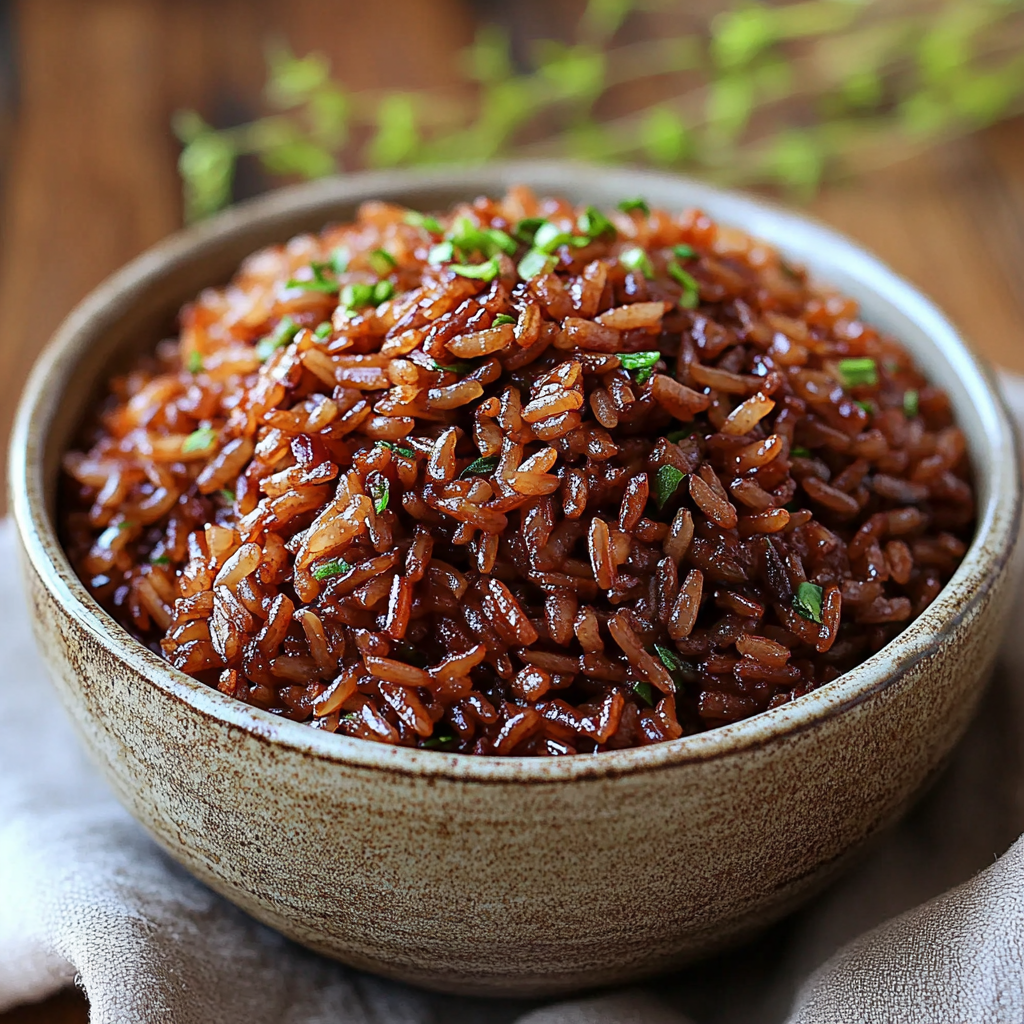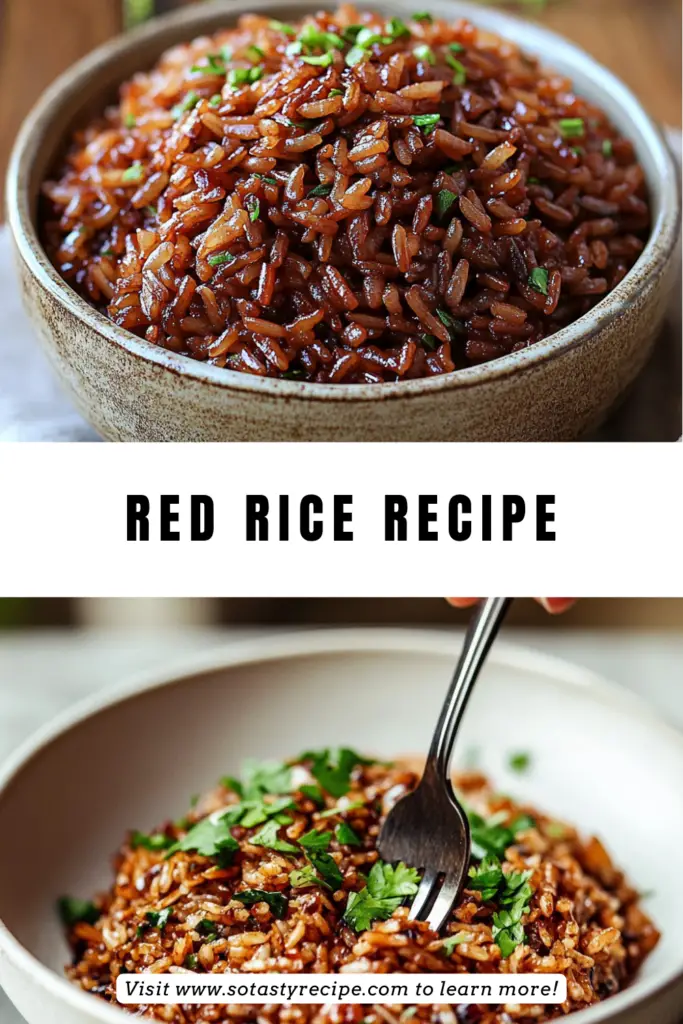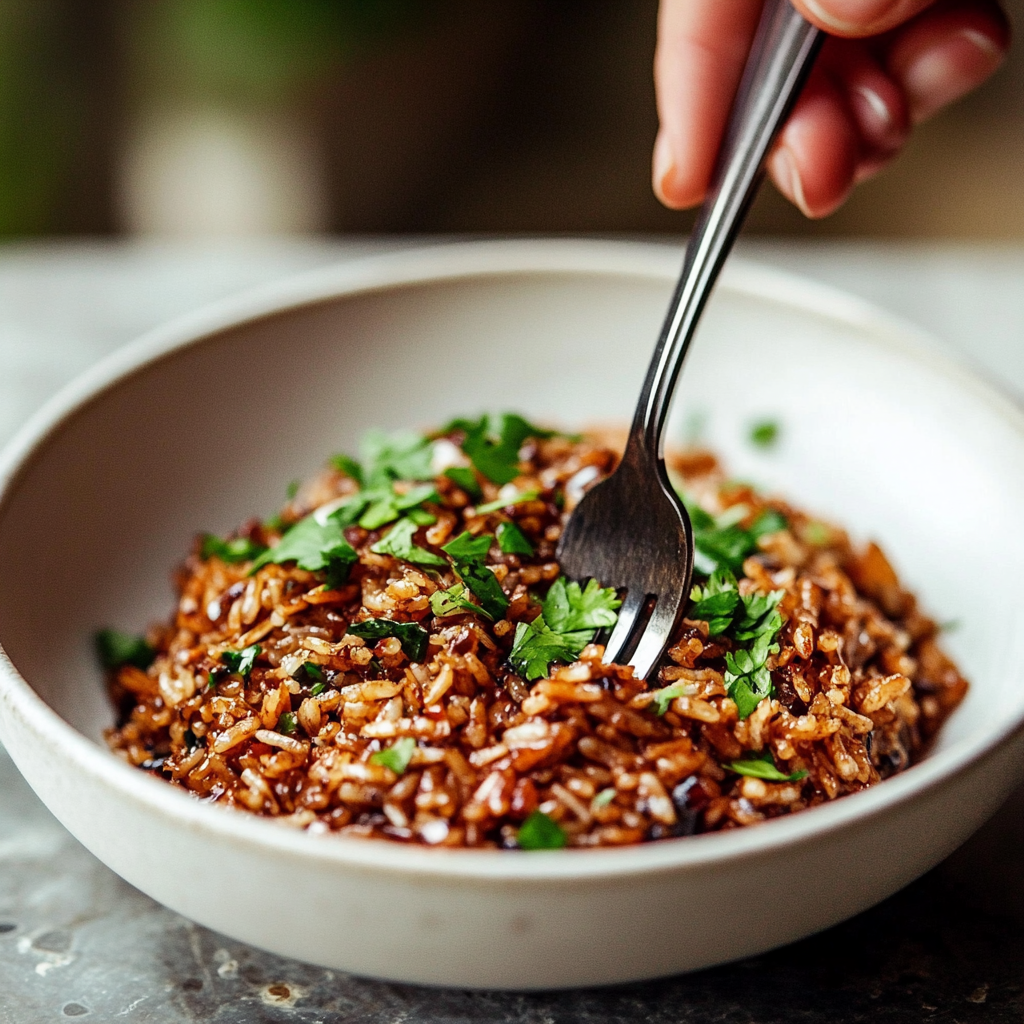Enjoy the ultimate guide to preparing red rice, a nutritious and flavorful dish that will elevate your meals.
Introduction
Red rice is a nutrient-rich alternative to white rice, packed with antioxidants, fiber, and an earthy flavor. Popular in health-conscious and traditional culinary circles, it has become a staple for those seeking a wholesome and satisfying meal base. This article will guide you through everything you need to know about red rice, from its origins and preparation methods to creative variations and pairing ideas.

What Is Red Rice?
Red rice is a variety of unpolished rice with a reddish tint, thanks to its high anthocyanin content. Its slightly nutty flavor and chewy texture make it a versatile ingredient in global cuisines. Unlike white rice, red rice retains its bran layer, making it rich in fiber, vitamins, and minerals.
Origin and History of Red Rice
Red rice has roots in ancient Asian and African cultures, where it was a prized staple. In regions like Bhutan, India, and Sri Lanka, red rice is deeply intertwined with local traditions. For example:
- In Bhutan, red rice is a key ingredient in ema datshi.
- Indian cuisines often use it for festive occasions and rituals.
Seasonal and Cultural Relevance
Best Season for Red Rice
Red rice is available year-round but is particularly cherished during harvest festivals in autumn. Its hearty texture pairs well with seasonal vegetables and spices.
Cultural Relevance
From Indian wedding feasts to African communal meals, red rice holds cultural significance. It symbolizes prosperity and is often served during celebrations.
Key Ingredients for a Perfect Red Rice Recipe
Core Ingredients:
- Red rice: Opt for high-quality organic varieties for the best flavor and nutrition.
- Water or broth: Enhances the taste while cooking.
- Spices and aromatics: Onion, garlic, bay leaves, or cardamom elevate its flavor.
Nutritional Breakdown:
- High in antioxidants.
- Rich in iron, magnesium, and zinc.
- Excellent source of dietary fiber.
How to Prepare Red Rice: Step-by-Step Guide
Ingredients:
- 1 cup red rice
- 2 cups water or broth
- 1 tablespoon olive oil
- Salt to taste
Instructions:
- Rinse the rice thoroughly under running water to remove excess starch.
- Soak the rice for 30 minutes to reduce cooking time.
- In a pot, heat olive oil and sauté aromatics (optional).
- Add the soaked rice and water/broth. Bring to a boil.
- Reduce heat to low, cover, and simmer for 30-40 minutes.
- Fluff with a fork and serve.
Tools and Techniques
Essential Tools:
- Heavy-bottomed pot: Ensures even cooking.
- Fine mesh strainer: Ideal for rinsing.
- Wooden spoon: Prevents scratching non-stick surfaces.
Special Techniques:
- Toasting the rice before boiling enhances its nutty flavor.
- Soaking ensures uniform cooking.
Variations and Alternatives
Substitutions:
- Use coconut milk instead of water for a creamy texture.
- Add nuts and dried fruits for a sweet-savory profile.
Regional Twists:
- Indian: Add spices like turmeric, cumin, and coriander.
- Thai: Mix with jasmine rice and coconut.
Perfect Pairings and Accompaniments
Red rice pairs beautifully with:
- Proteins: Grilled chicken, tofu, or lentils.
- Vegetables: Steamed broccoli, carrots, or roasted zucchini.
- Sauces: Peanut or tamarind sauce.
Health Benefits of Red Rice
Nutritional Advantages:
- Supports digestion due to high fiber.
- Helps manage cholesterol levels.
- Rich in antioxidants, promoting cellular health.
Suitability for Diets:
- Perfect for gluten-free, vegan, or low-GI diets.

Frequently Asked Questions (FAQs)
What is special about red rice?
Red rice’s bran layer is rich in antioxidants, fiber, and essential minerals, making it more nutritious than white rice.
Why does red rice take longer to cook?
The bran layer on red rice requires more time to soften compared to polished rice varieties.
Should red rice be soaked before cooking?
Soaking is recommended to reduce cooking time and ensure even texture.
Why is it called red rice?
The reddish hue of the bran layer gives this rice its name.
Best Time to Enjoy Red Rice
Red rice is versatile enough for any meal. Serve it at lunch with a protein-rich curry or as a side for dinner with grilled vegetables.
Recipe Evolution
From a humble staple to a gourmet ingredient, red rice has evolved to suit diverse cuisines and dietary needs. Modern chefs now experiment with it in desserts and fusion dishes.
Presentation Tips
- Serve red rice in a decorative bowl.
- Garnish with fresh herbs or a sprinkle of nuts for added appeal.
— END OF ARTICLE —
Suggested Recipes
For more savory recipes, you can also check my friend Alicia’s blog here.

